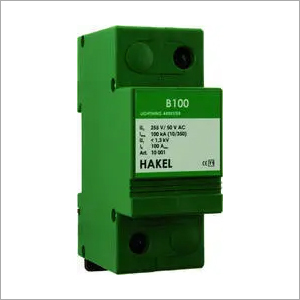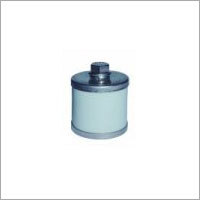- Home Page
- Company Profile
-
Our Products
- Signal System Protection Arresters
- Printed Circuit Board
- Stainless Steel Arrestors
- MS Protector Full SCH
- Master Slave Control Circuit Board
- Electric Surge Protection Equipment
- Spark Gap Switch
- Surge Protector
- Linksys Router
- Surge Protection Control
- Surge Protection Circuit Boards
- Data Protector Switch
- Data Protector Switch Board
- Surge Protector Circuit
- Data Line Transient Protector
- Data Protector Arresters
- Data Protector
- Telecom Co-axial SPD
- Telecom Surge Protection Device
- Surge Protection Devices
- Surge Protection SPD
- Solar Photovoltaic SPD
- Electric Coaxial Surge Protector
- Electrical Surge Protection Device
- Industrial Surge Protection Devices
- High Voltage Surge Protection Arrester
- Electric Circuit Boards
- Power Surge Arrester
- Power Arrestors
- Surge Arrester
- Lightening Arrestors Spark GAP
- Arrestors Plug
- Arrestors Power
- Lightning Arrester
- Protection Arrestors
- Arrester -
- Arrestors -
- Lightning Arresters Upto 1000 V
- Surge Protection Unit
- Lightning Arrester Unit
- Lightning Surge Protector
- Surge Switch
- B100 Lightning Arresters
- PIV12,5-275 Lightning Arresters
- PIV12,5-440 Lightning Arresters
- PIV-850 Lightning Arresters
- PIV12,5-275 DS Lightning Arresters
- PIV12,5-440 DS Lightning Arresters
- PIV12,5-150 Lightning Arresters
- PIV12,5-150 DS Lightning Arresters
- PIV12,5-75 Lightning Arresters
- PIV12,5-75 DS Lightning Arresters
- HS50-50 Lightning Arresters
- HS100 Arresters
- B50 Arresters
- HS55 Lightning Arresters
- Lightning Arrester Surge Protector
- HCS/3 0 Lightning Arresters
- HCS/3 0 DS Lightning Arresters
- HCS/3 1 Surge Arresters
- HCS/3 1 DS Lightning Arresters
- JK110 Lightning Arresters
- HG150 Lightning Arresters
- HZ110/3 0 Arresters
- PIV12,5-275/1 1 Lightning Arresters
- PIV12,5-275 DS/1 1 Lightning Arresters
- HS50-50/3 0 Lightning Arresters
- Arresters For Protection Of Signal Systems
- Surge Protection Devices DTB
- Surge Protection Devices DTB 1/12 /L
- DTB 1/48 /L Surge Protection Devices
- DTB 1/T /L Surge Protection Devices
- DTB 1/6 Surge Protection Devices
- DTB 1/24 Surge Protection Devices
- DTB 1/T Surge Protection Devices
- DTB 1/24 /R Surge Protection Devices
- DTB1/AR Surge Protection Devices
- DTB1/ART Surge Protection Devices
- DTE 1/6 Surge Protection Devices
- DTE 1/12 Surge Protection Devices
- DTE 1/24 Surge Protection Devices
- DTE 1/48 Surge Protection Devices
- DTE 1/T Surge Protection Devices
- DTNVE 1/24/0,5 Surge Protection Devices
- DTNVE 1/24/5 Surge Protection Devices
- Arresters DTB 485
- DTB 2/485 /L Arresters
- DTNVE 1/30/0,5 /L Surge Protection Devices
- Surge Arresters
- Outdoor DC Systems
- Outdoor AC Systems Surge arresters
- Arresters for Indoor AC System
- Indoor DC Systems
- Cathodic Protection Surge Arrester
- Surge Protection for Telephone
- ADSL Telecommunication Lines Surge Protection
- Type 2 / Class II / Class C Surge Arrester
- Type 1 2 / Class I II / Class B C Surge Arresters
- Spark Gap Lightning Arrester
- Lightning Current and Surge Arrester
- Surge Protection
- Surge Protection for Offices And Family Houses
- Surge Protection Devices for Industrial Applicatio
- Surge Protection Devices for Industrial Application
- Insulation Monitoring Devices
- Protection Of Photovoltaic Systems
- Pipeline System Protection
- Offshore Oil Applications
- Low Voltage Limiter
- Grade Crossing
- Lightning And Surge Protection Of A Wind Turbine S
- Surge Protection for VFD
- Lightning and Surge Arresters
- PV Surge Arresters
- Surge Filters
- Power Supply Protection Arresters
- Equipotential Bonding SPD
- Surge Arrester for Communication Lines
- Surge Protection Device
- Powerline SPD
- Insulation Monitoring Device
- Voltage Guard
- Circuit Boards
- Equipotential Decoupling Gas Discharge Tubes
- Ground Fault Equipment
- Lightning Conductors Equipment
- Metal Lugs
- Solar PV DC Surge Protection Device
- Spark Gap Lightning Arresters
- Isolation Spark Gap for pipelines
- Ethernet Surge Arrester
- Surge Protection for Signal Lines
- Solar PV Surge Arrester
- Combined Surge Arrester
- Surge Arrester for Data Lines
- Cable Gland
- Battery Terminal
- Bimetallic Connector
- Fasteners
- Signal System Protection Arresters
- Certification & Factory Tour
- Contact Us

Cathodic Protection Surge Arrester
100.00 - 1000.00 INR
Product Details:
X
Cathodic Protection Surge Arrester Price And Quantity
- 100.00 - 1000.00 INR
- 1000 Piece
Cathodic Protection Surge Arrester Trade Information
- Nhava Shena
- Cash in Advance (CID) Cheque Cash Advance (CA)
- 1000 Piece Per Day
- 20 Days
- Yes
- Sample costs shipping and taxes has to be paid by the buyer
- Box
- Australia South America Western Europe Middle East Central America Africa Asia Eastern Europe North America
- All India
Product Description
Buried pipelines for oil, gas and other inflammable materials are normally provided withcathodic. This, in turn, requires the use of insulating flanges at terminal points on the pipeline system, such as at tank farms, governor stations, etc. In order to limit the extent of the appliedcathodic protection and prevent the loss of protective current to other buried metallic structures.
In these locations, in the event of a lightning strike on to any above ground pipe work or connected structure, or an electrical fault causing a voltage surge on the pipe, a flashover across the insulating components to the flange could occur.
In case of potential difference origin between two sides of insulation flanges, the high Spark gap ignites and interconnects both parts for a transient time (typical value of internal resistance at startup of HGS100 Ex is 0.001 0.002). HGS100 Ex is certified for EEx m II T3 (FTZU 04 ATEX 0255X) and is suitable to be used in hazardous areas.
The reasons motivating the choice of the interconnection of metallic masses are important. They should be well known in order to consider acceptable solutions that may reconcile the incompatibilities between these standards and the cathodic protection. On should well distinguish the risks of lightning and other potential surges that may lead to damage to electrical equipment, the electrical hazards for personnel as well as the means to ensure their protection. For the risks of lightning, theoretically, on could not implement a grounding circuit. It is useless with respect to the issue equipotentiality as mentioned above. Moreover, the grounding resistances, measured at low frequency (50 Hz) are totally different from the value of their impedance which is to be considered at very high frequency (lightning). In fact, the grounding systems are of no use for the evacuation of the lightning currents, they only act as a protection of personnel against the hazards related to the potentials at industrial frequencies. Because of this fact they have been made mandatory by the legislation in force. For the protection of persons the important criterion consists of avoiding a potential difference, which is deemed hazardous, between two regions of the human body. In case of a potential test post, for instance, a grounding system should be installed at the location where the individual is supposed to touch a point at which the potential is different from the one where his feet are in contact with the ground. A person is always supposed to be exposed to a potential difference if he touches two parts that are electrically isolated one from each other (for instance two metallic structures separated by an insulating joint). It is this reason that justifies the interconnection of the metallic structures. By interconnection of metallic masses one should understand the interconnection of the structures (including rebar of concrete and the grounding systems of buildings), the grounding of the premises (safety of personnel) and the lightning protections. The essential objective is to ensure a preferential path of return, of the lowest resistance, for the currents to the ground. Moreover the potential gradient created at the ground surface by the flow of the current is diminished with regard to what it would be on individual groundings (safety of personnel).
Enter Buying Requirement Details

 English
English Spanish
Spanish French
French German
German Italian
Italian Chinese (Simplified)
Chinese (Simplified) Japanese
Japanese Korean
Korean Arabic
Arabic Portuguese
Portuguese



